Our accommodations at Cheow Lan Lake were basic. I mean mattress-on-the-floor-no-wifi-not-even-power-outlets-in-the-room basic. The Keereewarin Chiewlarn Resort floated on the lake with raft houses linked together in two perpendicular rows, joined at a common dining area.
Our original itinerary said we would be hiking, so I assumed we would boat to some chunk of land a couple of times during our stay. With that in mind, I booked two nights at the lake. In fact, we didn’t do any hiking, and the only diversions were to play in the lake and head out twice daily for long-tail boat rides to look for wildlife. There’s only so much swimming two old, out-of-shape people can do, and the boat rides got a little tedious when the wildlife continued to stay hidden.
Fortunately, our guide took his time getting to this destination, and it turned out to be one of my favorite days of our vacation. Quite a few guests at the treehouse resort were heading to the lake, so we all piled into two vans for the trip. After a rest stop at a small family-owned campsite, we went for a glorious hike in the national park. We kept up a steady pace, pausing to appreciate a particularly incredible tree with buttress roots taller than Tony or slowing down to explore a couple of caves, where stalagmites and stalactites sparkled and tiny bats hung from the ceilings. It was exactly the hit of nature I needed.
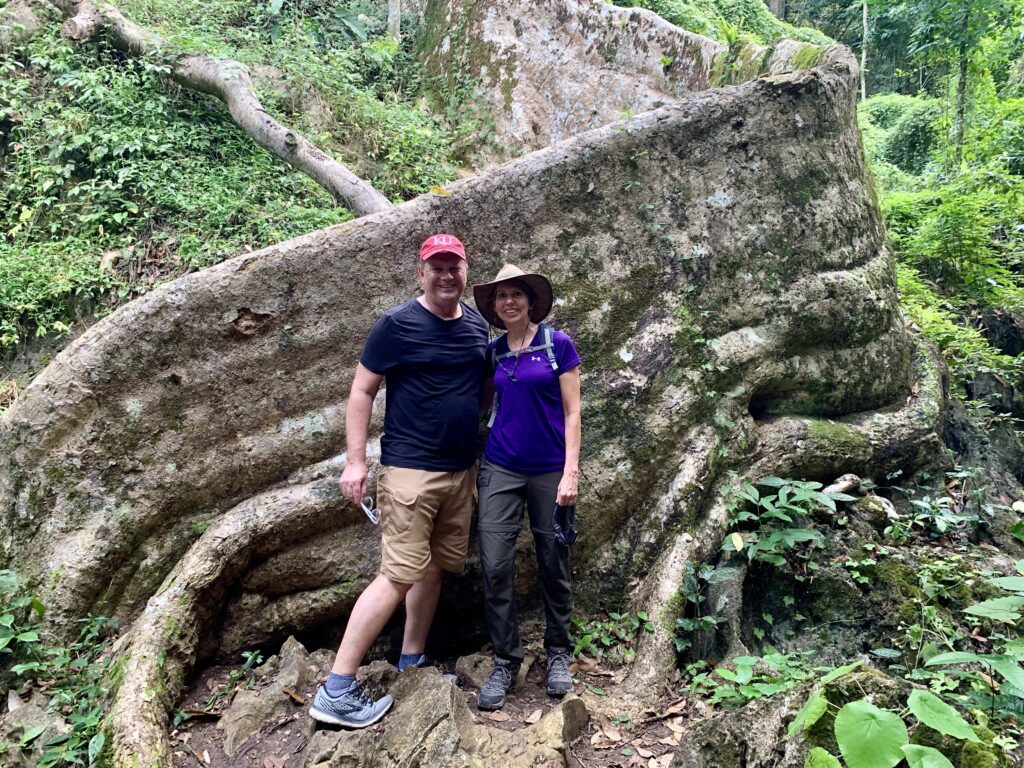
We returned to the campsite for lunch and then took off for the lake, where we boarded a long-tail boat. Rather than going straight to our “resort,” the guide gave us a tour of some impressive karst formations in the lake. Thais call the area “Guilin, Thailand” because of its similarity to Guilin, China, where the landscape is littered with these towering rocks. Tony and I visited Guilin when we lived in China, but we had no idea that the two areas were once part of the same coral reef. Visit Khao Sok explains the fascinating geological history:
The history of Khao Sok national park starts 300 million years ago. Rising oceans created a shallow sea with conditions perfect for the growth of coral. The result was a massive reef which stretched from China to Borneo. Eventually, more sediment buried this reef deep below the surface, and the pressure compressed the coral into limestone. It is this limestone that forms the Karst mountains we see today!
About 60 million years ago, the Indian tectonic plate collided with the Eurasian plate and as a result formed the Himalayas. At the same time, Thailand was rotated clockwise and moved to the south-east as the Himalayas rose. The ancient, buried limestone was thrust up, folded, faulted, and then eroded into its current form.
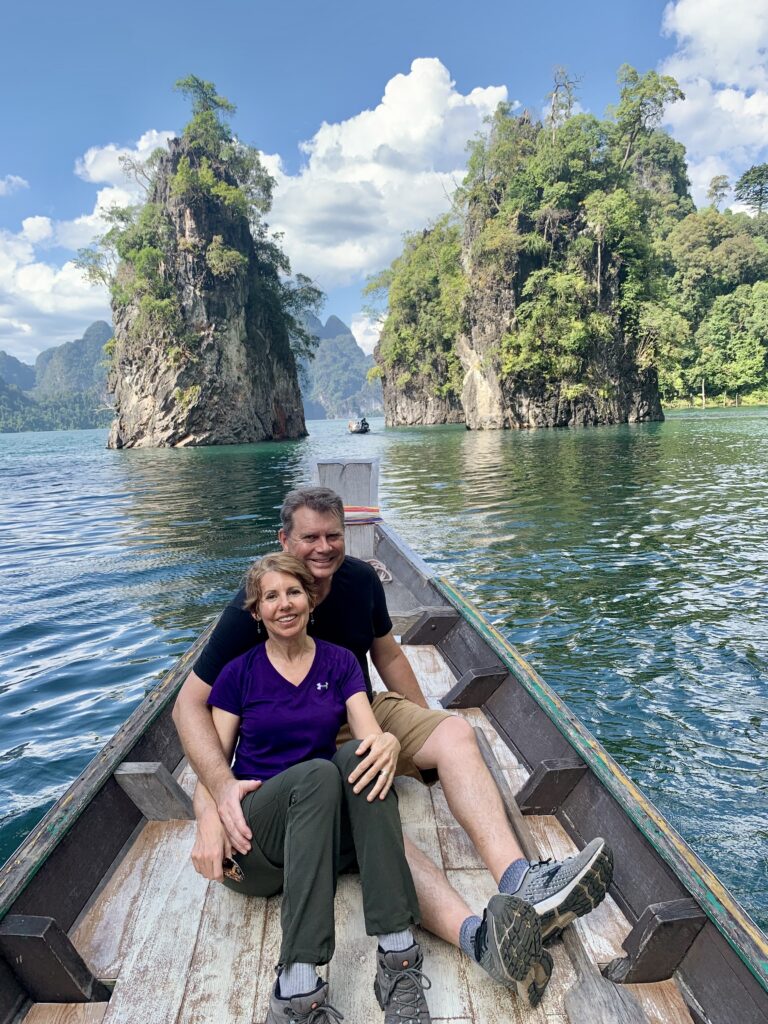
The lake itself was created when Thailand dammed the Pasaeng River in 1987 for hydroelectric power and flood control. As the waters rose, efforts to rescue and relocate animals largely failed, and the five abandoned villages – including homes, schools, and temples – still sit at the bottom of the lake. Kind of sad.
Although two nights was one night too many at our primitive raft house, I can’t complain. I spent a lot of time sitting on our deck, reading a book, and enjoying the scenery.
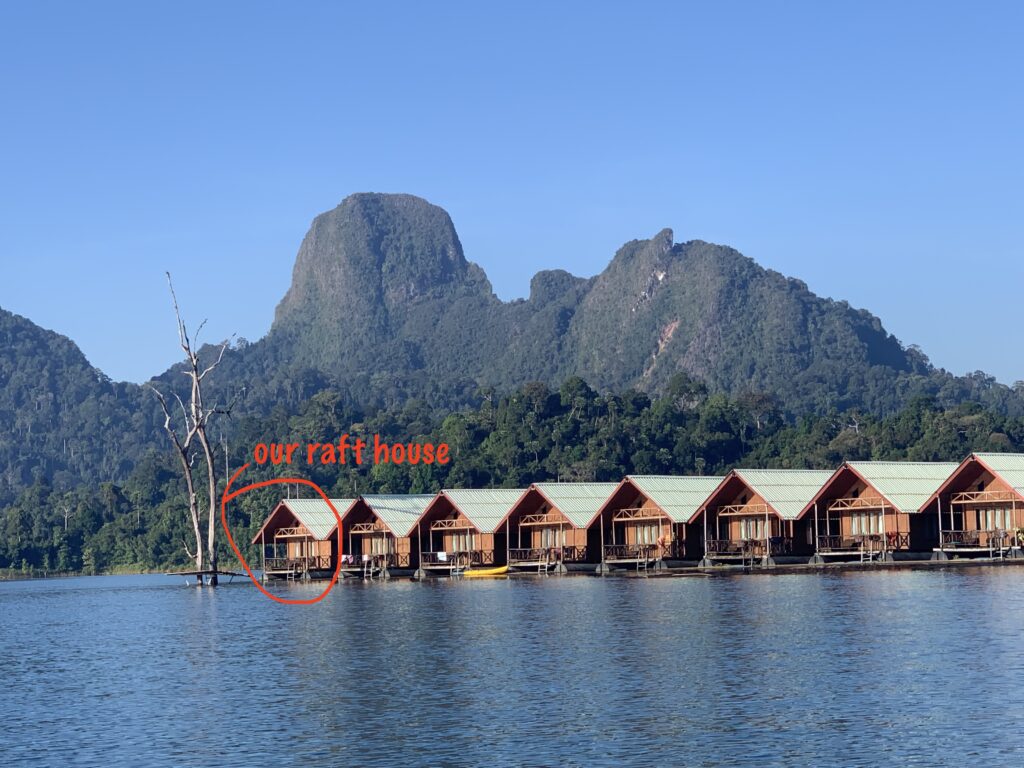
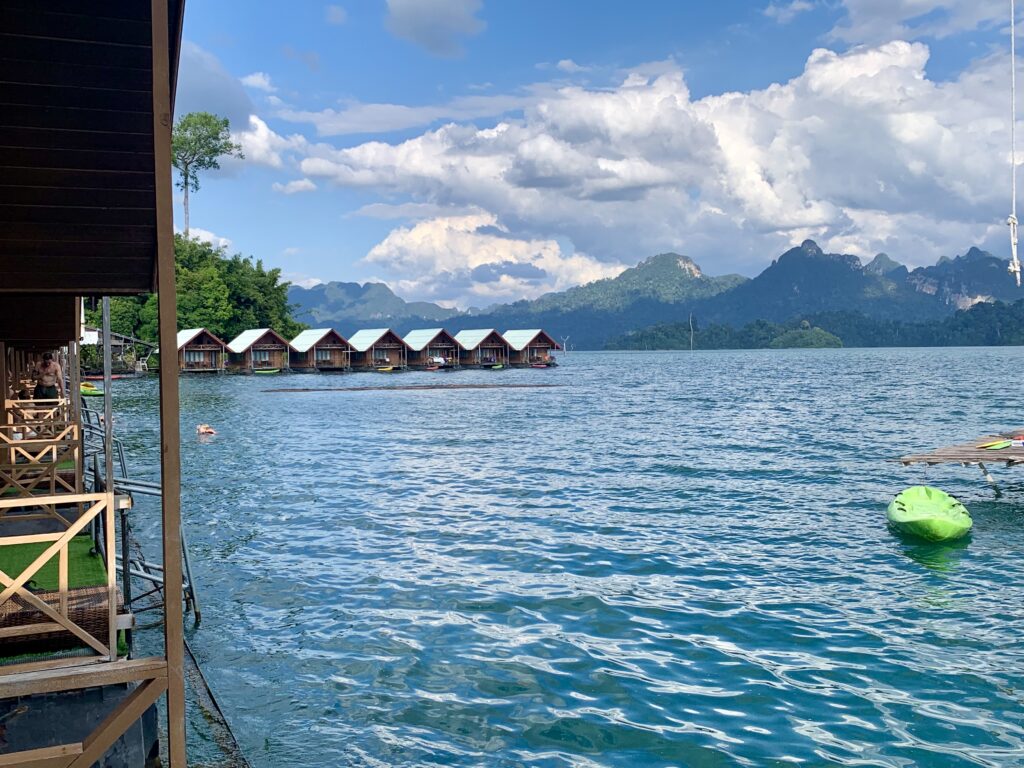
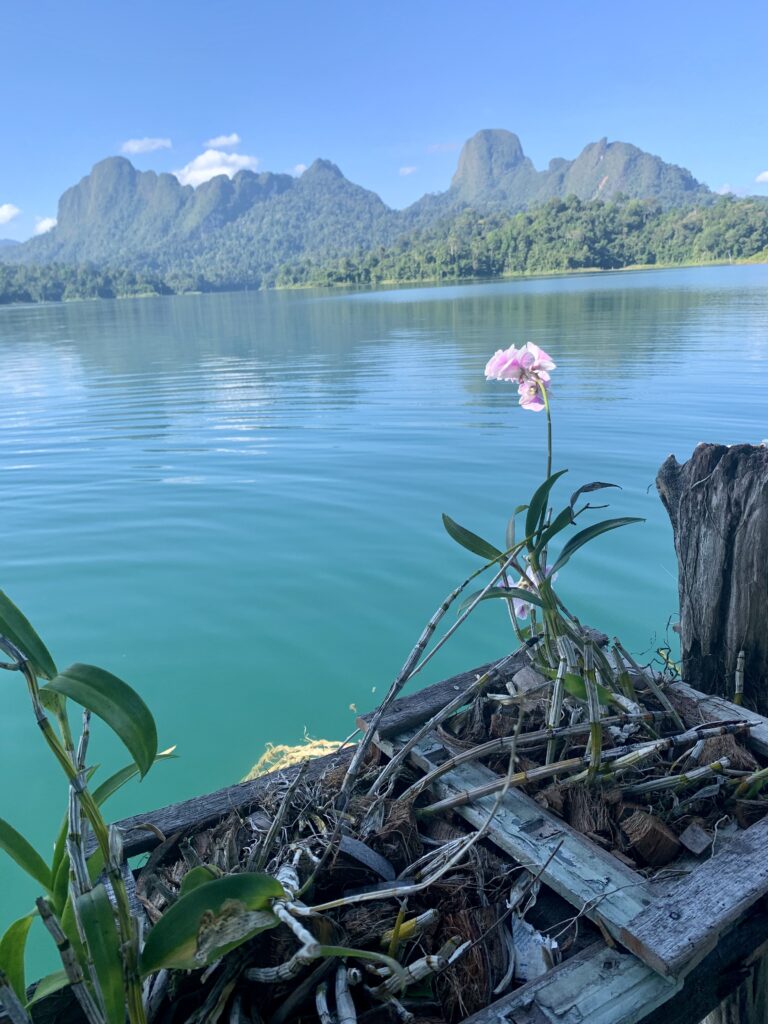
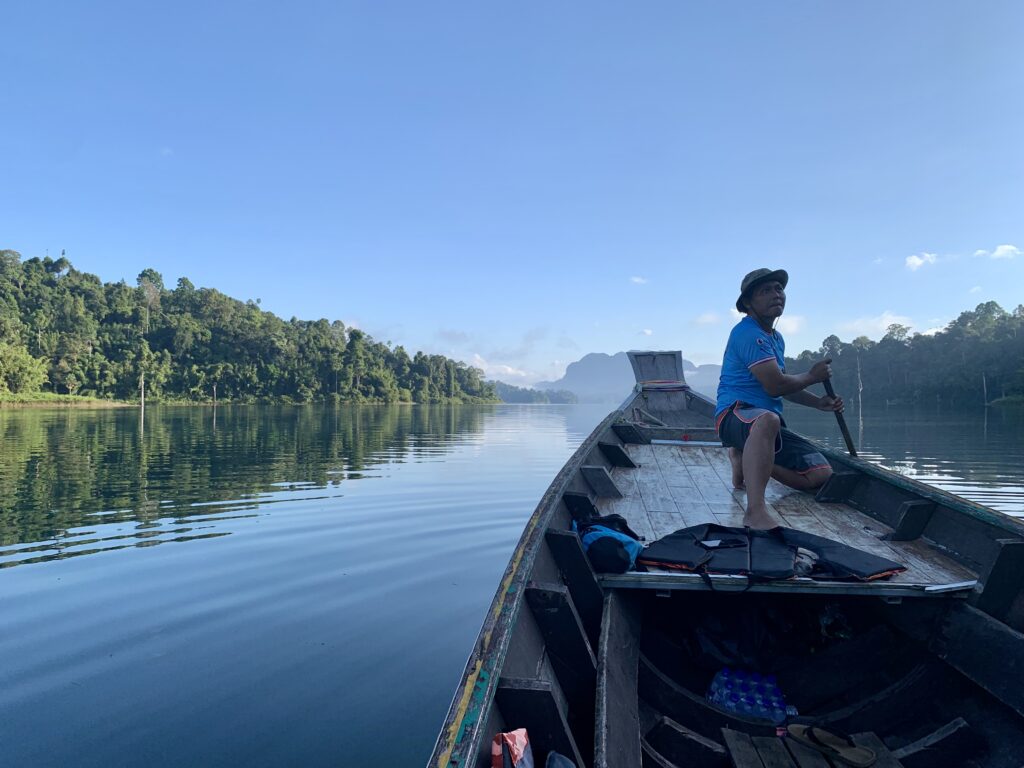
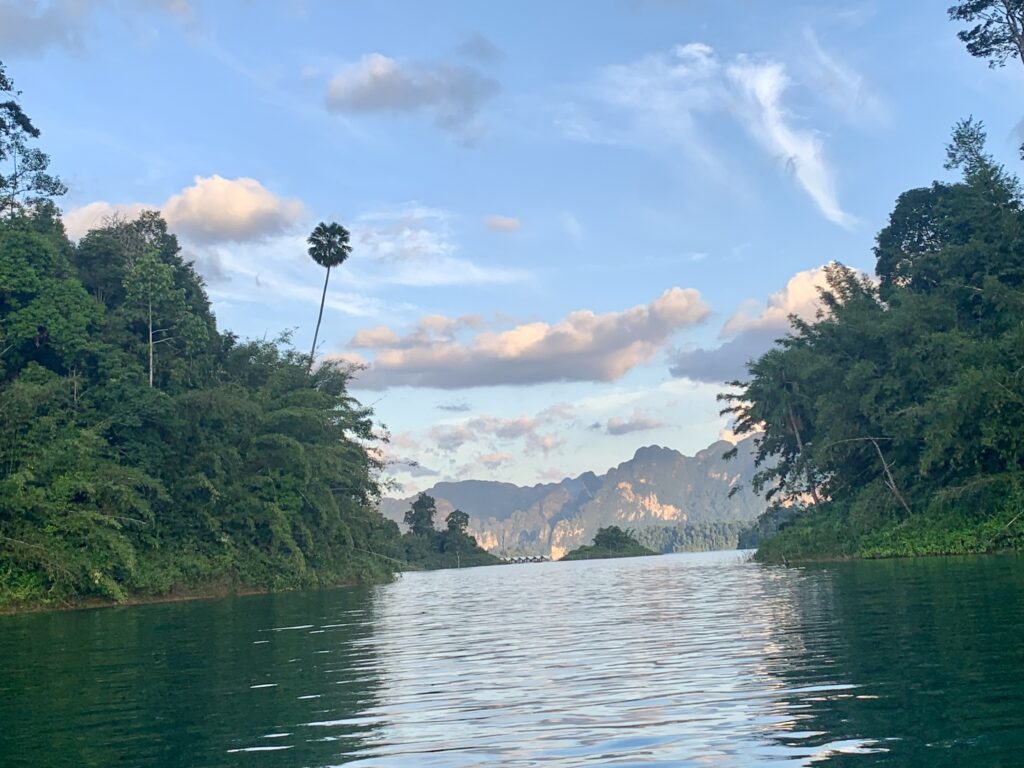
Finally, we took a boat to the mainland and were happy to find the driver we had booked to take us to Phuket Town. Previous visits to Phuket were solely for the beaches, but this time we stayed in town and poked around the touristy neighborhood. We had hoped to visit the night market, but it was closed, dang it. The next morning, we boarded a speed boat for the 5-hour journey to Koh Lipe. Island time!

Any inside pics of the raft house? *cami
I didn’t take any! Just picture a room with a mattress on the floor. Ha!